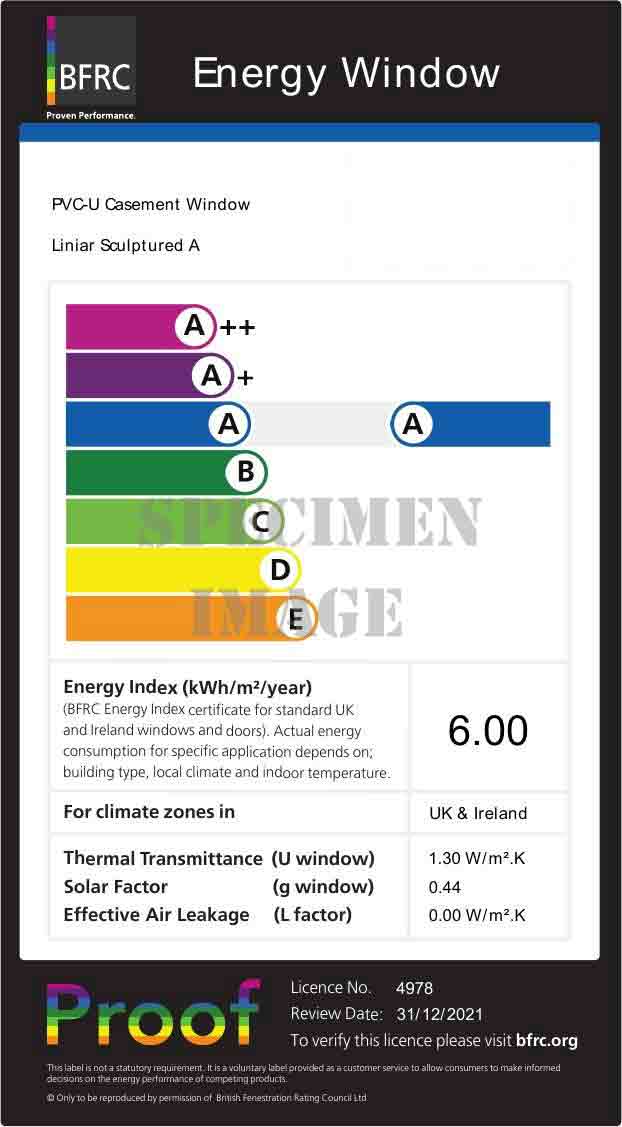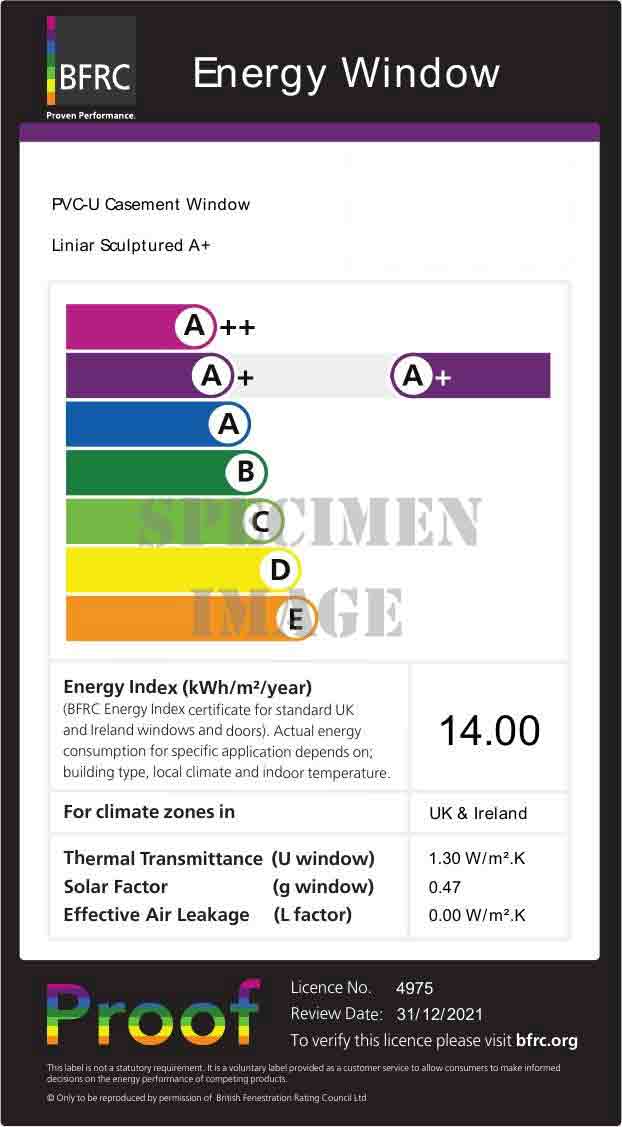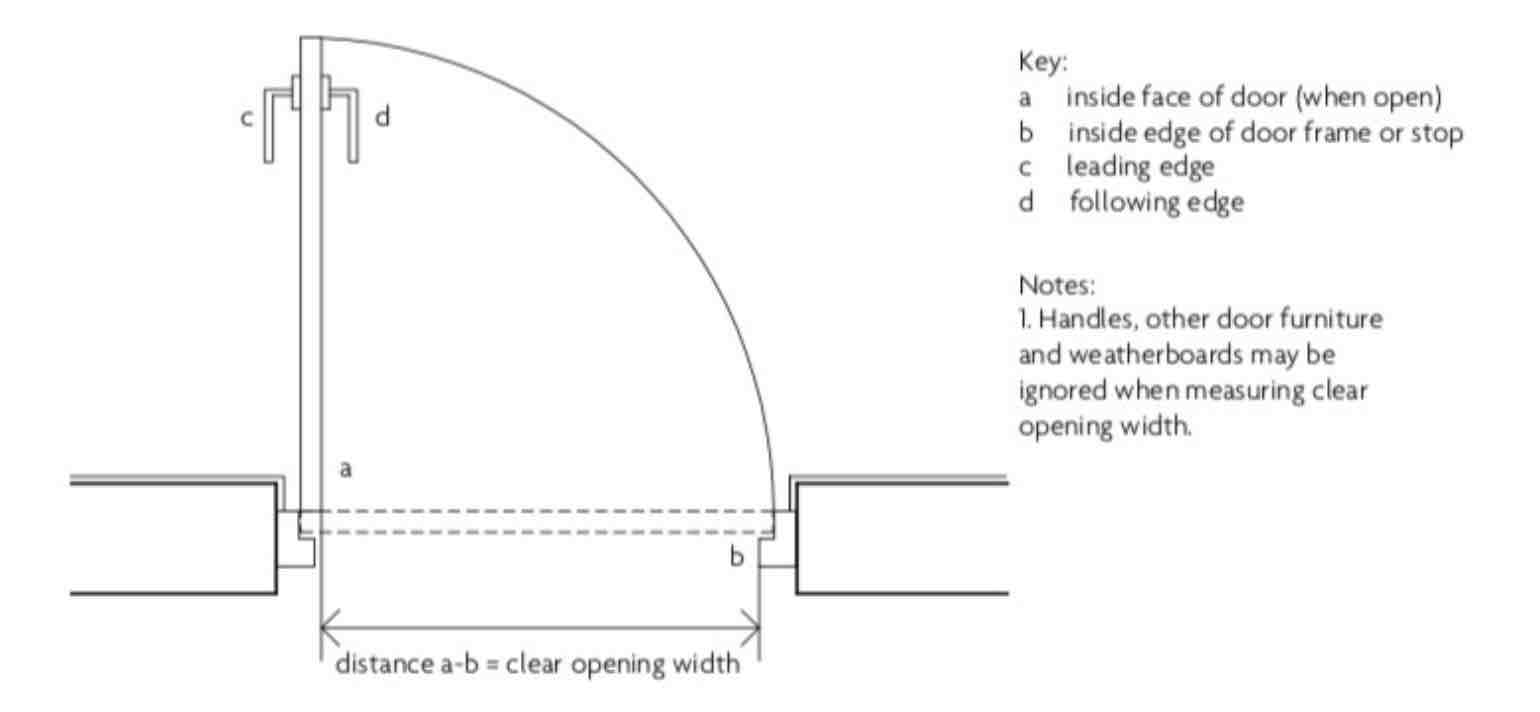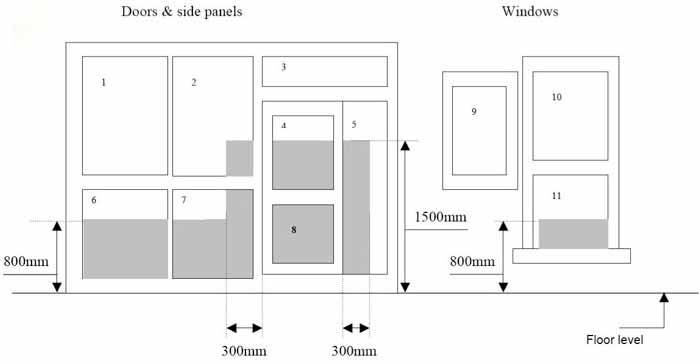Energy Ratings, U Values & Building Regulations for Doors & Windows
Since April 2002, all replacement glazing has come within the scope of the Building Regulations. This means anyone who installs replacement windows or doors has to comply with new thermal performance standards. (Just replacing the glass is exempt).
When the time comes to sell your property, your purchaser's surveyors will ask for evidence that any replacement glazing installed after April 2002 complies with the new Building Regulations. There are two ways to prove compliance:
- A certificate showing that the work has been done by an installer who is registered under the FENSA Scheme
- A certificate from the local authority saying that the installation has approval under the Building Regulations.
The FENSA Scheme
The FENSA scheme allows window and door installation companies that meet certain criteria to self-certify that their work complies with the Building Regulations. It was set up by the Glass and Glazing Federation, in association with all key stakeholders, and meets with central Government approval. A sample of the work of every installer is inspected by FENSA appointed inspectors to ensure standards are maintained and installers who fail to perform can be suspended or even excluded from the scheme. FENSA also inform local authorities of all completed FENSA installations and issue certificates to householders confirming compliance.
Any installation done by a firm which is not registered by FENSA, including work done as a DIY project by a homeowner, needs full local authority approval under the Building Regulations. You should note that you, as the homeowner, are ultimately responsible for ensuring the work complies with the Building Regulations.
Just Doors UK are dedicated to not only making sure our doors and upvc windows are fully compliant with the latest Building Regulations, but also our customers understand as much as they can about the current and any upcoming changes to regulations. We have created this section to remove confusion and promote informed decision making.
Means of Fire Escape - Part B
Fire escape windows when open must provide an unobstructed opening of at least 0.33m² with a minimum dimension of 450mm in height or width. The bottom of the openable area should be no more than 1100mm above the floor area.
Ventilation - Part F
These revisions to Building Regulations come into effect on Wednesday 15th June 2022. The Building Regulations - Ventilation: Approved Document F is available to view here: https://www.gov.uk/government/publications/ventilation-approved-document-f
We strongly recommend that you take the time to read this email to allow you to develop your own understanding, however, for the purpose of providing context for this communication, see below excerpt which we feel offers a good general overview of the aspects which impact our industry the most:
| Room | Minimum equivalent area of background ventilators for dwellings with multiple floors | Minimum equivalent area of background ventilators for single-storey dwellings |
|---|---|---|
| Habitable rooms | 8000mm² | 10,000mm² |
| Kitchen | 8000mm² | 10,000mm² |
| Utility | no minimum | no minimum |
| Bathroom | 4000mm² | 4000mm² |
| Sanitary accommodation | no minimum | no minimum |
1. The use of the above table is not appropriate in any of the following situations and expert advice should be sought.
- If the dwelling has only one exposed façade.
- If the dwelling has at least 70% of its openings on the same façade.
- If a kitchen has no windows or external façade through which a ventilator can be installed.
2. Where a kitchen and living room accommodation are not separate rooms (i.e. open plan), no fewer than three ventilators of the same equivalent area as for other habitable rooms should be provided within the open-plan space.
3. The total number of ventilators installed in a dwelling’s habitable rooms and kitchens should be no fewer than five, except in one-bedroom properties, where there should be no fewer than four.
4. If a bathroom has no window or external façade through which a ventilator can be installed, the minimum equivalent area specified should be added to the ventilator sizes specified in other rooms.
The new building regulations state trickle vents will be required by law in the majority of situations. There are exemptions to the rule (eg listed buildings and conservation areas) and these should be discussed with your FENSA Approved Installer or local building control officer.
If there are already vents fitted on the original windows, then you can fit the same sized vents on the new windows. For example, 2500mm2 EA vents can be replaced with 2500mm2 EA vents or higher. Just remember that the airflow cannot be decreased.
If the existing windows do not have vents, then the replacement windows must have vents fitted to meet the requirements of the revised Approved Document F. For houses in England, that means a minimum airflow of 8000mm2 EA in habitable rooms and 4000mm2 EA in non-habitable rooms.
Thermal Efficiency & Performance - Part L
These revisions to Building Regulations come into effect on Wednesday 15th June 2022.
2022 Changes to Document L1A
The targeted specification value can be described as the desired u-value and the limiting value is the minimum requirement.
Also, note that a new home is always built to a minimum standard of total energy performance.
- Targeted specification value for windows and glazed doors with >60% glazed area: 1.2 U-value
- Targeted specification value for semi-glazed door (30-60% glazed area): 1.0 U-value
- Limiting standard for any windows and doors: 1.6 U-value
As per the limiting standard listed, windows and doors installed into a new dwelling are required to be of 1.6 U-value or less. If the U-value of the windows and glazed doors is between 1.3 – 1.5 (higher than the targeted specification value of 1.2), another element such as the external walls will need to achieve a better u-value than the target stated for that element for the dwelling to achieve its minimum standard of total energy performance.
2022 Changes to Document L1B
All replacement windows and doors must be no worse than what is being replaced or:
- Replacement windows to be at least 1.4 U-value or Window Energy Rating B
- Replacement doors with >60% glazing to be at least 1.4 U-value or Doorset Energy Rating C
- All other replacement doors to be at least 1.4 U-value or Doorset Energy Rating B
| NEW DOCUMENT L1B STANDARDS 2022 | DOCUMENT L1B STANDARDS 2016 | |
|---|---|---|
| Replacement Windows | U Value = 1.4W/m²K or Window Energy Rating Band B | U-Value = 1.6W/m²K or Window Energy Rating = Band C |
| Replacement doors with more than 60% area glazed | U Value = 1.4W/m²K or Doorset Energy Rating Band C | 1.8W/m²K (or exempt if fitted into existing door frame) |
| Other replacement doors | U Value 1.4W/m²K or Doorset Energy Rating Band B | 1.8W/m²K (or exempt if fitted into existing door frame) |
In the coming year additional pressure is going to be put on everyone to become more energy efficient. Whether this pressure comes from governmental bodies or customers just wanting to get on top of the rising energy costs, energy efficient doors will need to feature in your plans.
The latest revisions to building regulations mean energy efficient doors will be made mandatory. As an imminent introduction of the U value for doors means all replacement doors will need to have a value of 1.4W/m2K or less (the new standard for windows). We think this is a logical step as there’s not much point in insulating your roof and walls and having ‘A’ rated windows if your door isn’t energy efficient too - heat will find the least insulated point and escape through it.
Window Energy Ratings (WER)
The Window Energy Rating (WER) tells you how energy-efficient the windows are. The rating system is based on a scale of G to A+, with A+ windows being the most energy-efficient.
The Liniar window system we offer is capable of achieving a Window Energy Rating (WER) of A+13 using a double glazed glass sealed unit when A+ is specified! We are not aware of another window profile system in the UK that can currently match this outstanding level of energy efficiency.


Wheelchair Access - Part M
All new builds are required to meet building regulations Part M. This is to achieve a minimum clear opening width of 775mm when the door is open. To meet this requirement, you would need to order an external door frame width of at least 960mm overall including the frame.

Toughened Safety Glass - Part N
There are rules and regulations as to what types of glass can be installed into windows, doors and other glazing locations. Here is our guide to help you understand where you must look to install the correct safety glass.
To comply with the Building Regulations glazing requirements or also known as ‘Critical Locations’ there must be safety glass or safety guards in place to protect people from injury. The most likely locations for accidents caused by glass breakage, which could result in cutting and piercing injuries are in doors, door side panels, low windows and low level glass in walls and glass partitions.
Safety glass should be fitted in all doors and other windows or glazed areas that are lower than 800mm from the floor level.
Critical Locations are considered to be:

- Glazing in doors – Glass which is wholly or partially within 1500mm from floor level. As the drawing below shows, any glass in doors that does not start over 1500mm from the floor must be safety glass.
- Glazing adjacent to doors – Windows/side panels wholly or partially within 300mm of the edge of a door and which is also wholly or partially within 1500mm from floor level must be safety glass.
- Low Level Glazing – Not covered in (1) OR (2) ABOVE - Other glazing that is wholly or partially within 800mm from floor level. This means that windows that are not located within 300mm of a door must use safety glass if the bottom of the glazing is within 800mm of the floor level.
Security - Part Q
From 1st October 2015 the building regulations for England introduced the requirement for security rated doors and windows to be provided for new build homes.
The approved document Q proposals included a recommendation for an enhanced level of security to be achieved by doors (including vehicular garage doors) and windows fitted into new dwellings. One of the crucial elements proposed was that doors and windows should, as a minimum, be of a design successfully tested to PAS 24. It was recognised that products meeting the requirements of the Secured by Design Scheme would meet the recommendations. Note that the new rules do not yet apply to replacement windows and doorsets.
